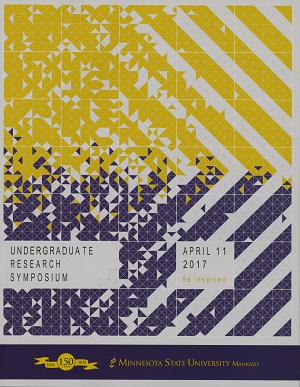Methicillin Resistance in Staphylococci Isolated From Healthy College Students
Location
CSU Ballroom
Start Date
11-4-2017 10:00 AM
End Date
11-4-2017 11:30 AM
Student's Major
Biological Sciences
Student's College
Science, Engineering and Technology
Mentor's Name
Timothy Secott
Mentor's Department
Biological Sciences
Mentor's College
Science, Engineering and Technology
Description
The rise of ß-lactam antibiotic resistant bacteria in the United States is a notable concern for many health care workers. This is concerning because these drugs have been reliably used to treat infections for several years. Staphylococcus aureus is one organism that has been known to exhibit a significant increase in resistance to antibiotics, specifically ß-lactam drugs such as methicillin. It is known that the organism is able to exhibit this resistance through two pathways. The first is a ß- lactamase pathway within the organism, and the second is a penicillin binding protein (PBP2a), which was previously found to be controlled by the mecA gene. In this investigation, bacteria were cultured from asymptomatic, otherwise healthy college-aged students to estimate the prevalence of resistant Staphylococcus species. Twenty-seven samples were collected and identified using standard identification techniques as well as molecular techniques. Those samples were then tested for their resistance using multiple different ß-lactam drugs. Of those 27 samples, 6 were found to be methicillin resistant, which was consistent result with what we anticipated to find. Those 6 resistant strains are currently being evaluated for minimum inhibitory concentrations of methicillin and the presence of mecA, the PBP2 allele associated with methicillin resistance.
Methicillin Resistance in Staphylococci Isolated From Healthy College Students
CSU Ballroom
The rise of ß-lactam antibiotic resistant bacteria in the United States is a notable concern for many health care workers. This is concerning because these drugs have been reliably used to treat infections for several years. Staphylococcus aureus is one organism that has been known to exhibit a significant increase in resistance to antibiotics, specifically ß-lactam drugs such as methicillin. It is known that the organism is able to exhibit this resistance through two pathways. The first is a ß- lactamase pathway within the organism, and the second is a penicillin binding protein (PBP2a), which was previously found to be controlled by the mecA gene. In this investigation, bacteria were cultured from asymptomatic, otherwise healthy college-aged students to estimate the prevalence of resistant Staphylococcus species. Twenty-seven samples were collected and identified using standard identification techniques as well as molecular techniques. Those samples were then tested for their resistance using multiple different ß-lactam drugs. Of those 27 samples, 6 were found to be methicillin resistant, which was consistent result with what we anticipated to find. Those 6 resistant strains are currently being evaluated for minimum inhibitory concentrations of methicillin and the presence of mecA, the PBP2 allele associated with methicillin resistance.
Recommended Citation
Linnell, Kelsey. "Methicillin Resistance in Staphylococci Isolated From Healthy College Students." Undergraduate Research Symposium, Mankato, MN, April 11, 2017.
https://cornerstone.lib.mnsu.edu/urs/2017/poster-session-A/17



